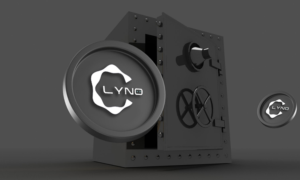Artificial intelligence has long been tethered to high-performance data centers and cloud computing, reliant on the massive infrastructure needed to train and run deep learning models. But as AI embeds itself into everything from smart home devices to industrial automation, one thing is becoming clear: AI is moving away from the cloud—and onto devices themselves.
Edge computing, now valued at nearly $34 billion, has existed in various forms for years. However, its role in AI deployment is transforming how machine learning operates in real-time environments, where latency, energy efficiency, and reliability are just as critical as raw processing power. In use cases like autonomous vehicles, industrial automation, and smart cities, the need to make split-second decisions without relying on cloud connectivity is accelerating AI’s migration to the edge.
To unpack this shift, we spoke with Vineeth Reddy Vatti, an expert in machine learning, computer vision, and real-time AI for autonomous systems. Vatti specializes in optimizing AI for embedded hardware, enhancing perception models, and developing efficient real-time AI solutions. His work experience provides a valuable perspective on the future of AI at the edge. He is also the author of the academic paper Optimizing Cloud Resources for Machine Learning Applications: A Comparative Study of SQL-Driven and Python-Driven Workflows, where he explores how different data processing frameworks impact performance and scalability, a critical topic as AI systems move from cloud to edge deployment.
Why AI is Moving to the Edge
Cloud computing has played a massive part in AI’s availability, enabling large-scale data processing for industries without the technical infrastructure to support it. However, when AI needs to operate in the physical world, cloud dependency becomes a liability. Bandwidth constraints, latency issues, and network reliability pose challenges when milliseconds matter, and when the benefits can improve cloud latency by up to 30%, these aren’t minor differences.
“Autonomous vehicles can’t afford delays,” Vatti says. “If a self-driving car needs to detect an obstacle and make a decision, sending data to the cloud and waiting for a round-trip response isn’t an option. Some decisions need to occur on-board and locally, without compromising accuracy or safety.”
This demand for real-time AI extends far beyond autonomous vehicles. In industrial automation, manufacturing robots need to detect defects and adjust processes on the fly. In smart healthcare, wearable devices must analyze biometric data in real time to alert users of potential health risks. Even consumer electronics, from voice assistants to AR/VR headsets, increasingly process AI models locally to enhance performance and privacy.
The Challenges of Running AI on Embedded Systems
While edge AI delivers advantages in speed, security, and reliability, deploying machine learning models on embedded systems presents unique technical challenges. Unlike cloud data centers with GPU resources, edge devices must be designed to operate under tight hardware constraints.
“Power consumption is still one of the biggest bottlenecks,” says Vatti. “Self-driving cars, especially electric ones, have a limited energy budget. Running models on high-powered GPUs isn’t always feasible, so the challenge is designing highly efficient AI architecture.”
Memory and computational efficiency are equally pressing concerns. Traditional deep learning models, particularly convolutional neural networks used in computer vision, require significant computing power and memory. On embedded platforms, AI engineers must optimize architectures, reducing model size without compromising performance.
Vatti has worked on model optimization techniques that improve AI efficiency on autonomous vehicle hardware. Through quantization, pruning, and knowledge distillation, he has successfully reduced the computational load of object detection and lane detection models while preserving accuracy. These techniques enable AI to run efficiently on lower-power processors, eliminating the need for high-end GPUs.
His academic research, including the paper titled, “The Role of GenAI in Enhancing Data Security and Analytics in Modern Software Development” explores how generative AI can further optimize software systems for performance and security. Beyond model efficiency, multi-sensor fusion adds another layer of complexity. Autonomous vehicles rely on LiDAR, cameras, and radar to perceive their surroundings, requiring AI systems that seamlessly integrate these diverse inputs in real time. Vatti’s work on Bird’s-Eye View (BEV) fusion models has enhanced autonomous systems’ ability to align and interpret sensor data, improving perception accuracy while minimizing latency.
Business Implications: Why Companies Are Investing in Edge AI
The growing demand for real-time AI is driving investment in low-power AI chips, specialized neural processing units, and embedded AI frameworks. More and more startups are specializing in tiny machine learning and exploring ways to embed AI models onto ultra-low-power devices, enabling AI-driven capabilities in everything from smart sensors to wearables.
For businesses, the benefits of edge AI extend beyond performance. Reduced cloud dependency lowers operational costs, while improved data security minimizes exposure to cyber threats. In regulated industries, processing AI locally ensures sensitive data never leaves the user’s device, addressing privacy concerns and compliance requirements. Resilience is another factor, edge devices can continue operating even if cloud connectivity is lost.
“In self-driving technology, cloud connectivity will always play a role, particularly for fleet management and over-the-air updates,” Vatti notes. “But the actual driving decisions will ideally happen at the edge.”
What’s Next for Edge AI?
The future of edge AI will be shaped by hardware advancements, new neural network architectures, and breakthroughs in energy-efficient computing. As real-time AI becomes a necessity rather than a luxury, companies will need to balance model complexity with hardware constraints, ensuring their AI systems can operate efficiently, reliably, and at scale.
For AI engineers like Vatti, also a Fellow at Hackathon Raptors, the challenge isn’t just building smarter models; it’s making intelligence lightweight enough to run in the real world. And as AI continues to integrate into vehicles, industrial systems, and everyday devices, the shift from cloud to edge is only just beginning.



































